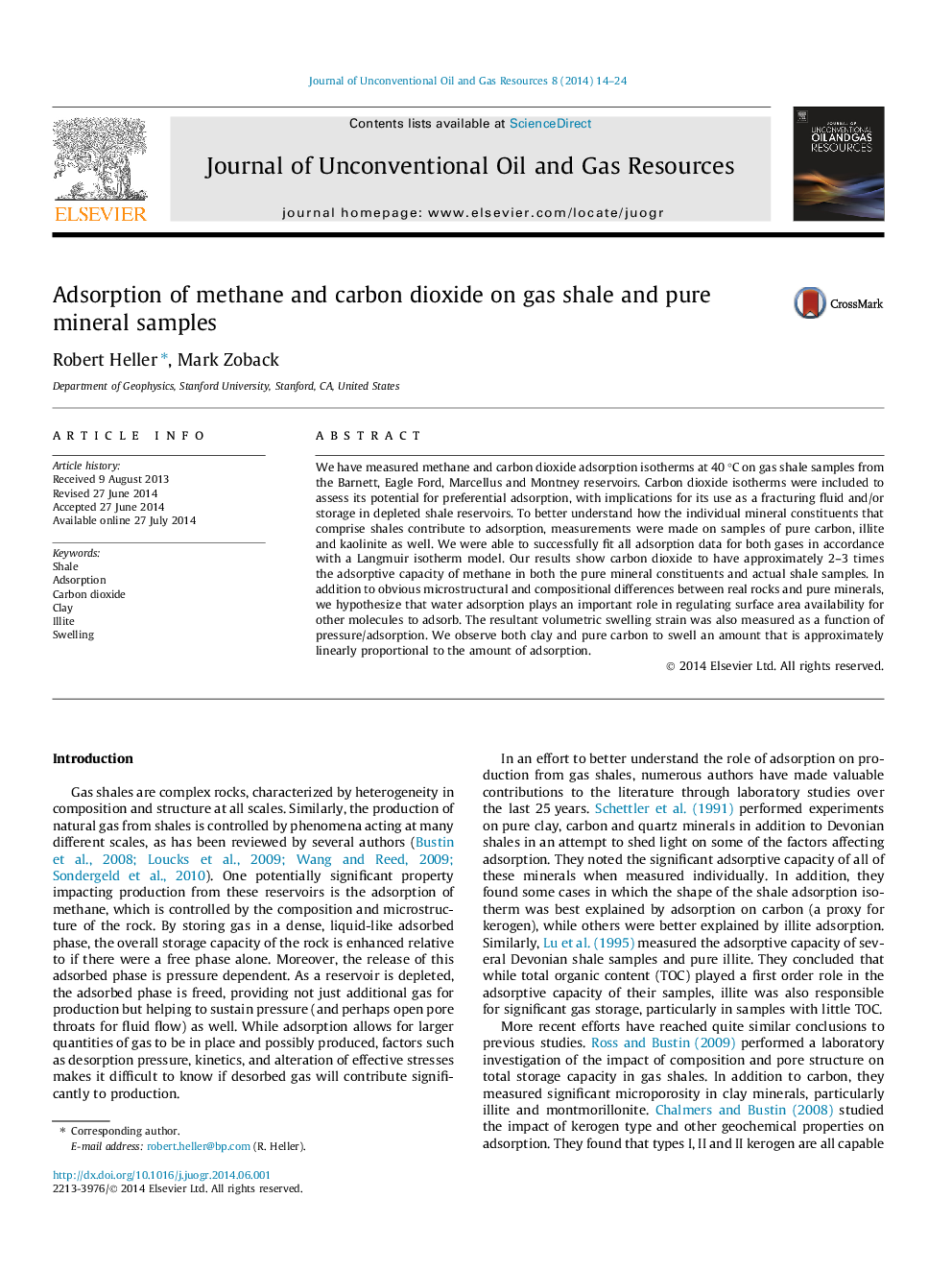| Article ID | Journal | Published Year | Pages | File Type |
|---|---|---|---|---|
| 1756723 | Journal of Unconventional Oil and Gas Resources | 2014 | 11 Pages |
•Methane and carbon dioxide adsorption.•Barnett, Marcellus, Eagle Ford and Montney shale reservoirs.•Illite, kaolinite and carbon adsorption.•Volumetric swelling strain resulting from adsorption.
We have measured methane and carbon dioxide adsorption isotherms at 40 °C on gas shale samples from the Barnett, Eagle Ford, Marcellus and Montney reservoirs. Carbon dioxide isotherms were included to assess its potential for preferential adsorption, with implications for its use as a fracturing fluid and/or storage in depleted shale reservoirs. To better understand how the individual mineral constituents that comprise shales contribute to adsorption, measurements were made on samples of pure carbon, illite and kaolinite as well. We were able to successfully fit all adsorption data for both gases in accordance with a Langmuir isotherm model. Our results show carbon dioxide to have approximately 2–3 times the adsorptive capacity of methane in both the pure mineral constituents and actual shale samples. In addition to obvious microstructural and compositional differences between real rocks and pure minerals, we hypothesize that water adsorption plays an important role in regulating surface area availability for other molecules to adsorb. The resultant volumetric swelling strain was also measured as a function of pressure/adsorption. We observe both clay and pure carbon to swell an amount that is approximately linearly proportional to the amount of adsorption.
